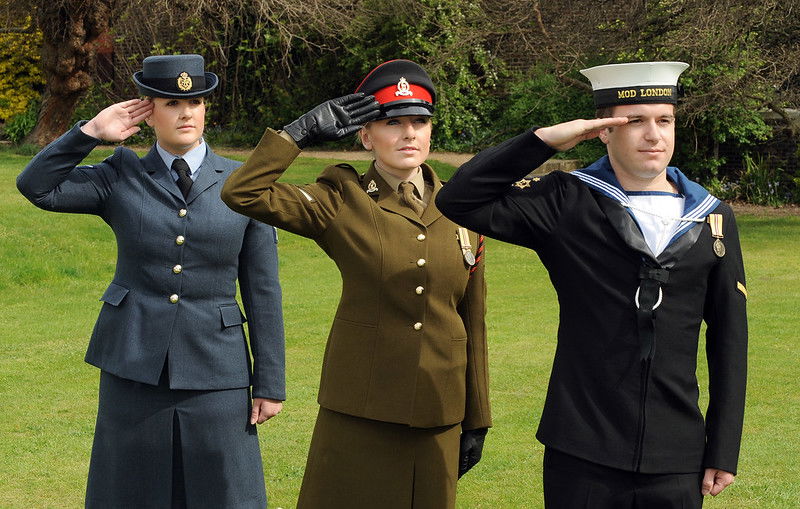From Medieval Knights to Modern Respect
The military salute is one of the most recognisable gestures of respect and discipline across the world. From the British Army to naval forces and airmen globally, the salute signifies courtesy, loyalty, and mutual trust between soldiers. Yet few realise that this seemingly simple motion has a fascinating origin that reaches back to the Middle Ages, where it emerged not from bureaucracy, but from the personal customs of medieval knighthood and honour.
The Medieval Origins of the Military Salute
In the Middle Ages, knights were the elite warriors of their time, bound by a code of chivalry that emphasised courage, loyalty, and respect. When two knights met - whether on the battlefield, in a royal court, or at a tournament - they often wore heavy armour, including visored helmets that completely covered the face. Identifying a friend or foe under such conditions was almost impossible without some form of gesture.To signal peaceful intentions, a knight would raise the visor of his helmet with his right hand — the same hand that normally held a weapon. By doing so, he revealed his face and eyes, showing honesty and trust. This act communicated two essential messages: “I come in peace,” and “You may recognise me as honourable.” It was both a practical action and a deeply symbolic one, reflecting the values of chivalric conduct in an age of constant warfare and rivalry.
This courteous gesture became a hallmark of knightly respect. It represented openness and loyalty — key elements of medieval social interaction, particularly within the military hierarchy.
From Visor Lift to Modern Salute
As centuries passed, armour and visors became obsolete, replaced by more mobile forms of warfare. Yet the symbolic act of raising one’s right hand endured. Soldiers no longer needed to lift visors, but the gesture evolved into a quick movement of the hand to the forehead or cap. By the 18th and 19th centuries, this hand-to-head motion was codified into the formal military salute we recognise today.
In the British military tradition, the salute came to represent the same spirit of courtesy and respect that defined the knights of old. It was — and remains — a gesture of mutual honour between those who serve. Contrary to popular belief, the salute is not a mark of subservience but one of professional respect. The one who salutes first does so as an acknowledgment of the other’s rank and service, while the return salute symbolises equality and shared duty under the same values.
The Meaning Behind the Modern Military Salute
The military salute meaning extends beyond mere regulation. It is a visible symbol of the moral framework that underpins military life — discipline, loyalty, respect, and trust. Every salute serves as a brief reaffirmation of the bond between soldiers and their commitment to these timeless virtues.
In the British Armed Forces, recruits are taught from day one that the salute is not just a movement but an expression of pride in service. Whether on parade grounds or in operational environments, the salute reinforces unity and professionalism.Its origins remind us that even as technology and warfare have transformed, the essence of military honour remains unchanged. The same principles that guided knights on horseback still inspire modern soldiers in uniform.
The Enduring Legacy of a Medieval Gesture
When we trace the origin of the military salute back to the medieval salute of knights, we uncover more than just a quaint historical detail — we find a living link between the past and present. It reveals how traditions rooted in knighthood and chivalry continue to shape military culture today.Even in times of war, human dignity has long been expressed through gestures of respect. The salute, though simple, carries centuries of meaning. It reminds us that discipline need not be devoid of humanity and that honour, in all its forms, begins with respect.
The next time a soldier raises their hand in salute, they are, in a sense, echoing the knights of medieval Europe — those who lifted their visors to show integrity, courage, and peace. Across centuries, the gesture has evolved, but its message remains timeless: respect freely given, loyalty proudly upheld.
The military salute stands as a bridge between the medieval code of chivalry and modern military professionalism. Its medieval origins rooted in knighthood and honour reveal that even amid conflict, courtesy and respect endure as universal values. From lifting a visor on the battlefield to saluting a superior on parade, the gesture’s meaning has remained steadfast — a small yet powerful symbol of trust, courage, and integrity that transcends centuries.
